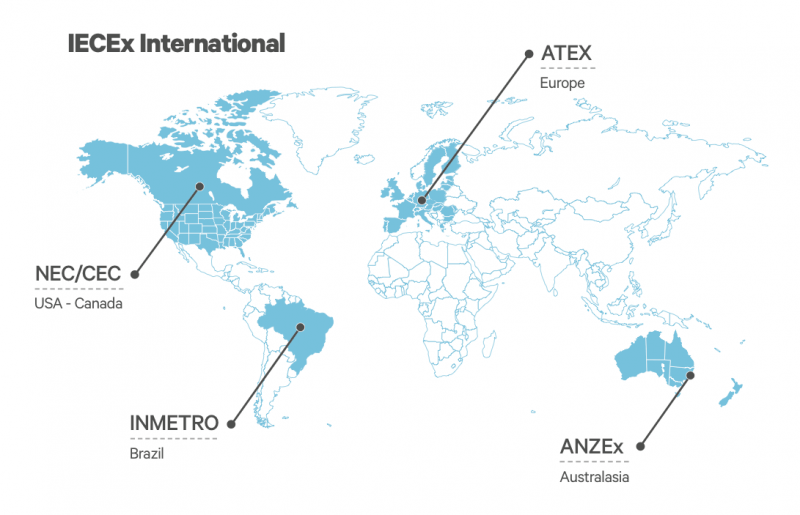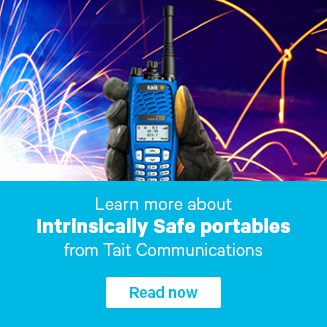Introduction to Intrinsically Safe Radios
An overview of common I.S. standards
Global Explosive Atmosphere Regulations
IECEx – International Certification for Explosive Atmosphere Equipment
The International Electrotechnical Commission (IEC) system for explosive atmospheres (Ex) equipment, is now the international benchmark. It is used in 30+ or more IECEx member countries, including Australia, Brazil, China, Great Britain, Europe, New Zealand, Canada and the USA.
Local Regulations
While IECEx has been widely adopted, there are a number of local regulations also in use. For example:
- NEC/CEC – US and Canada
- ATEX – Europe
- INMETRO – Brazil
- ANZEx – Australasia
It is ultimately the responsibility of the employer to ensure they adhere to the correct standards, have a Hazard Plan in place, and use the appropriate equipment.

NEC/CEC – North America
In the United States, equipment must meet the National Electrical Code (NEC) ANSI/NFPA-70. Equipment can be approved for divisions or zones. Equipment for use in explosive atmospheres in Canada must meet the Canadian Electrical Code (CEC) CSA C22.1.
The United States Occupational Safety and Health Administration (OSHA) accredits Nationally Recognized Testing Laboratories (NRTL) who test and certify to US standards. Similar accreditation exists for Canada. Examples include FM Global, MET, UL, and CSA.
Division certified equipment will bear the mark of the certifying body (for example MET, FM or UL), plus the Division rating (Div 1 or Div 2). Zone certified equipment will also bear the mark of the certifying body, as well as AEx marking or Ex marking for the USA or Canada respectively.
ATEX – The European Directives
Equipment for use in explosive atmospheres in Europe is covered by Directive 94/9/EC (ATEX Equipment) until April 19th, 2016 and Directive 2014/34/EU from April 20th, 2016. The term ATEX is taken from the directive title “Atmosphères Explosibles”.
At the equipment technical level, IECEx and ATEX are very similar. The standards used to meet ATEX are generally European versions of the IEC 60079 series of standards. The ATEX directive also defines equipment groups and categories, which gives ATEX equipment additional label markings (compared with IECEx).
In addition to the ATEX equipment directive, there is Use or Workplace Directive 1999/92/EC. This specifies Health and Safety requirements for employers and utilizes fairly standard processes of hazard identification, risk assessment, hazard mitigation, and surveillance.
It is the application of the Use directive that results in a Hazard Plan with appropriate zoning of areas subject to risk.
It is ultimately the responsibility of the employer to ensure they have a Hazard Plan and are using appropriate equipment.
INMETRO – Brazil
Brazilian government regulations are administered by INMETRO. Equipment for use in explosive atmospheres requires INMETRO certification. Now that Brazil has adopted the IECEx scheme, INMETRO certification is relatively straightforward, via submission and review of the IECEx documentation.
ANZEx – Australia and New Zealand
The ANZEx Scheme is the official program for certification of equipment for explosive atmospheres for Australia and New Zealand. IECEx certification will be directly accepted for Group II equipment.
Conclusion: Wherever you are, remember that it is ultimately the responsibility of the employer to ensure you adhere to the correct standards, have a Hazard Plan in place, and use the appropriate equipment.
 Radio Academy
Radio Academy




